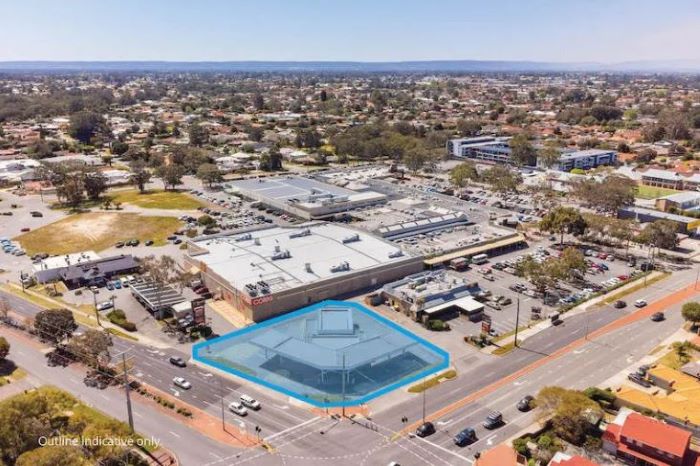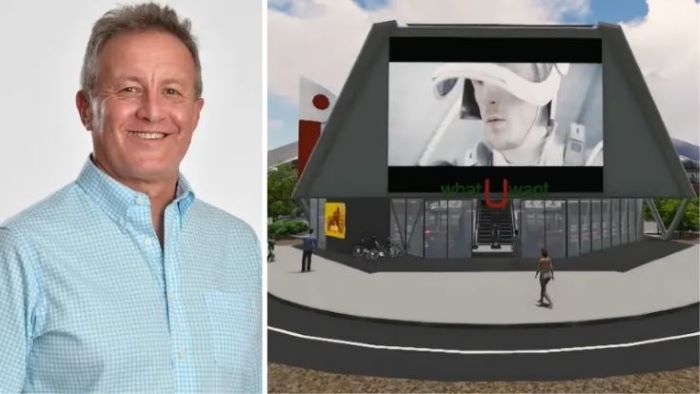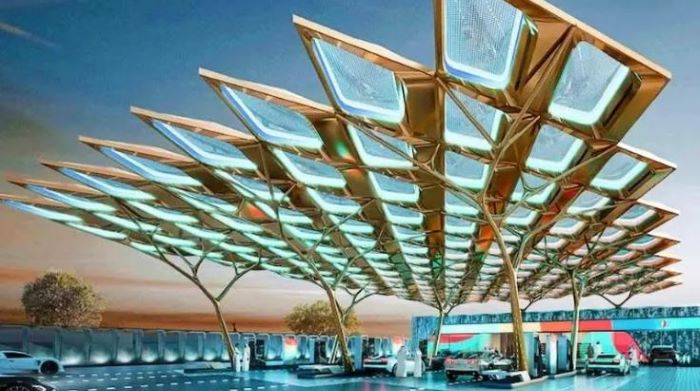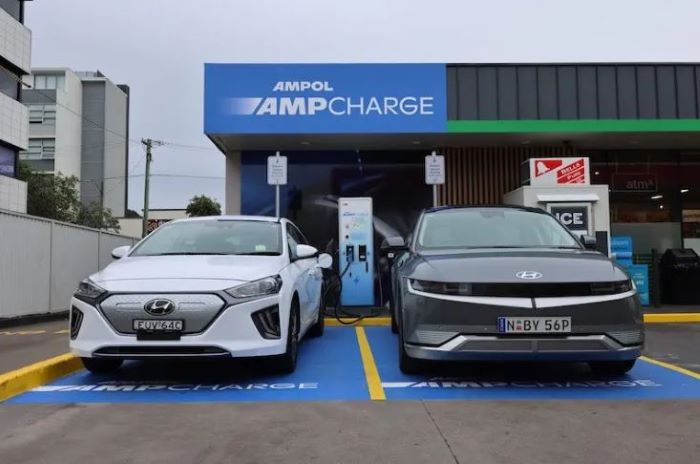Old enough to remember the days when you filled your car from a single bowser right on the roadside in front of a milk bar?
Or when a bloke in white overalls filled your tank while you sat behind the steering wheel and watched the fuel wheel spin? Or when a mechanic, a tyre-fitter and hydraulic hoist were always part of a service station?
Or some bowsers were topped with a merino sheep and called Golden Fleece? Which became Caltex? And is now Ampol?
Or even when petrol pumps were called bowsers?
The humble servo has had to be agile and fleet of foot over the years to keep pace with changes in customer habits, cars and technology. And today the sector faces arguably its biggest challenge yet. Some say a revolution.
Two separate portfolios, with a total of 31 fuel and convenience retail sites, came to market this week begging the question: where’s the future investing in a service station forecourt?
The answer might surprise you, says Burgess Rawson which is marketing 14 prime convenience retail sites in Victoria, Queensland and Western Australia.
“Interest has been really good,” head of agency Jamie Perlinger says. “Across the whole portfolio I think we’ve had over 400 inquiries.”
He says the interest has come from private investors, family offices, syndicators, big retailers that already share the sites, and real estate investment trusts. While most inquiries were local there had been interest from Asian investors.

Perlinger won’t say who’s selling the portfolio other than it’s a listed fund looking to recycle capital into their development arm.
All the properties have long-term leases with an average weighted lease expiry of 10.8 years, and count tenants such as Chevron, Viva Energy, EG Group and 7-Eleven.
“What people are looking for is secure long-term investments, and here you’ve got some of the biggest companies in the world as your tenants.”
The vendor of the other portfolio is clear—Ampol Petroleum is selling 17 vacant service station sites in six states.
Commercial real estate agency Colliers says the regional sites range from 734sq m to 45,820sq m and are a mixed-use or industrial zonings.
“We continue to witness increased levels of demand for defensive ‘set and forget’ style investments which can be developed and even managed remotely,” portfolio manager Jordan McConnell says.
While 31 forecourts is a small number and sales within the sector are common, the Boston Consulting Group estimated last year that without a change in business model, a minimum 25 per cent of service stations will be unprofitable by 2035.
Mark McKenzie, chief executive of the Australasian Convenience and Petroleum Marketers Association, says they count 7980 service stations across the country, down from a peak of about 27,000 locations in the late 1970s.
Despite that, he says, forecourts remain a good business.

“I would say to you it’s an incredibly buoyant market at the moment, there’s a lot of activity in terms of interest in purchases, as well as interest in sales.”
A global pandemic helped.
“Covid made us lazier,” says Burgess Rawson’s Perlinger. “Service stations have everything you need, not only fuel, but food and drink. The business side of things is extremely good.”
McKenzie agrees.
“What’s actually happened is that the community has rediscovered the urban servo,” he says. “We’re seeing people visiting their service station three to four times a week, instead of once every seven to 10 days when they fill up.”
“We’ve got some research coming out which shows people have perceived service stations have a very wide range of grocery items and a surprising range of quality food items.
“So the days of the service station having the six-month-old sausage roll are long gone. We’ve got major chains looking to provide quality coffee solutions, we’ve got baked-on-premises muffins, we’ve got food to go, as well as prepared food.”
In fact, non-fuel sales are a big part of the modern forecourt business. In 2000, typically about 10 per cent of forecourt revenue was from non-fuel sales. Today it is between 20 and 25 per cent. But profitability is about twice that of fuel sales.
Earlier this month, for example, Doughnut Time and Ampol announced they had struck a supply deal that will see the sweet treats available in all Victorian Ampol Foodary stores immediately. A national expansion to all 650 Ampol outlets will follow in 2023.

And last week Exxon Mobil extended its eight-year exclusive supply deal with retailer 7-Eleven for another 11 years. In announcing the deal 7-Eleven Australia’s chief executive Angus Mackay said they realised “fossil fuel will be with us for quite a while to come”.
At least 10 years, says McKenzie.
According to the Electric Vehicle Council, 26,356 electric vehicles (EVs) were sold in the year to September, which, while it was up 65 per cent on last year, represented just 3.39 per cent of new light vehicle sales.
Sales of motor spirit—that which fuels light vehicles—have been declining at a rate of 3 per cent a year for the past five years in Australia. But as truck fleet logistics have continued to grow, so too has the demand for diesel, at about 8 per cent a year.
And statistically, a new,petrol-driven car purchased today will stay in the national fleet for 15 to 17 years.
“So even in the most optimistic forecasts through to 2050, 60 per cent of the energy consumed within the light vehicle fleet will be conventional fuels just because of the age of vehicles,” McKenzie says.
“And even if 100 per cent of the fleet in the light vehicle market was electric, my service station is still going to need to provide diesel.”
Certainly, fast charging of EVs is a key component of the next generation service station.
This month Ampol opened the first of five pilot electric vehicle charging sites at its Ampol Woolworths MetroGo site in Alexandria, New South Wales. The new charging infrastructure is part of an initial roll out of 120 sites to be delivered on Ampol forecourts Australia-wide in the next 12 months.

But it won’t be fuel sales that save the forecourts. Like most real estate, it will be all about the location. In this case, strategic locations.
Ampol says its new AmpCharge site will be capable of delivering a charge up to 150kw, with the capacity for two vehicles at a time. Eventually forecourts will need to provide ultra-fast 350kw charges, which can add a range of 350km in around 15 minutes.
But that kind of draw means the forecourt must be near the grid.
ACAPMA has been actively lobbying government on the need for strategic improvement of the electrical grids.
“Because if you’re actually going to support EV fast chargers then the grid has to be configured very differently to what it is now,” McKenzie says.
“Service stations are the only asset that is positioned to deal with supervised fast charging.
It’s not going to work in shopping centre car parks, or in the workplace. This has to be an area where it’s actually feasible for you to keep a supervised attendant in place to ensure the safe charging of the vehicles.”
Small sites will be less attractive because EV recharging must have physical separation from traditional fuel pumps.
And if McKenzie has his way forecourts will be big enough to support stackable vehicle parking. Autonomous electric vehicles, he says, are the end game.
“No one will own those vehicles; they’ll be operated by a contemporary rental company where they’ll be summoned on demand via a mobile phone. But someone’s actually got to clean and maintain the vehicles, make sure the tyres are fully inflated.”
If life in the 21st century is all about the last mile, service stations will become logistics hubs.
ACAPMA is already partnering with a group allowing them to tap into micro logistics. The aim is for service stations to become a pick-up point for online deliveries. One that is conveniently positioned. While you fast-charge your car.
“And we’re using technology so people can actually co-ordinate that delivery, they pick up in line with the other missions they’ll be going to a certain station for. We’re a fair way through that process at the moment,” McKenzie says.
Studies commissioned by ACAPMA as far back as 2015 suggested the future service station forecourt will include a vertiport, and online deliveries would be via a drone.
A landing space for drones, autonomous cars, commercial kitchens, shared workspaces and video conferencing? While you wait for your fast charge, or use a gymnasium? And perhaps even do a load of laundry?
“Service stations are really the only asset left in the main streets in both regional and metro areas that actually have the space to be able to take advantage of this because we’re strategically positioned in every local community around the country,” he said.
“And the sites that are going to be valuable are the ones that have a relatively large forecourt footprint, and a good size shop that gives them the agility to respond to changing consumer patterns, and the capacity and location to continue to support conventional fuel products.”
Once again, service stations will need to be agile.
Article source: www.theurbandeveloper.com
from Queensland Property Investor https://ift.tt/UkfuSx0
via IFTTT